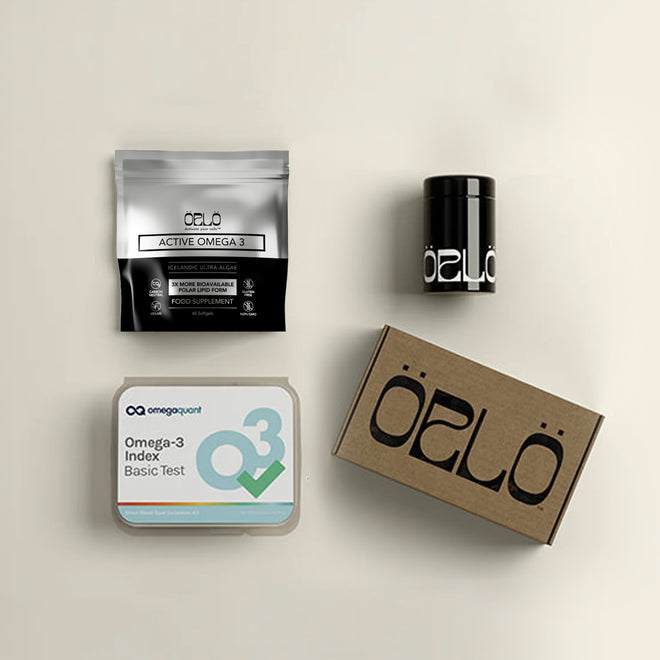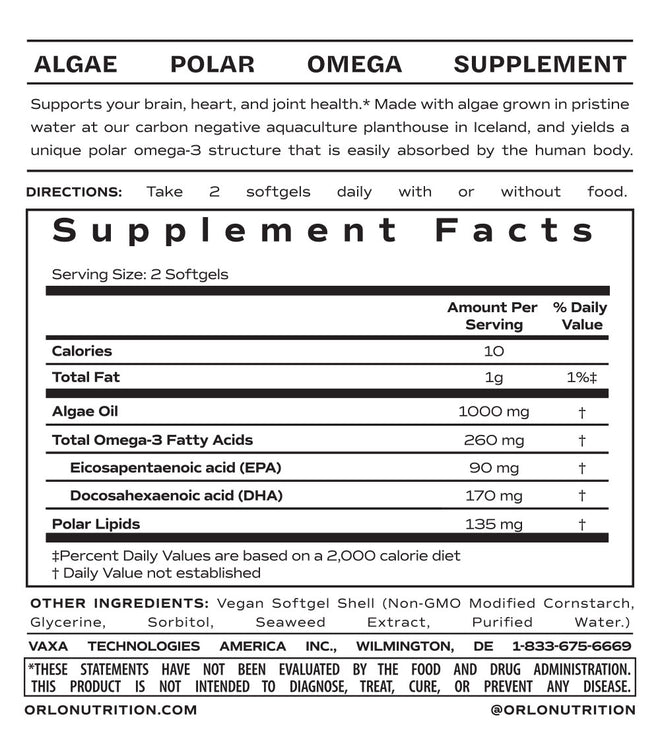Free shipping on purchases over $69
Essential Hormonal Health For Women
Maintaining good health is essential to living a long and happy life but achieving that moving target throughout our roller coaster lives can be a very difficult task. Sometimes we need help - and some of that help can come from essential building blocks - like omega-3s.
Omega-3 fatty acids are essential fats, but most of us don’t get enough. We eat on the go. We eat packaged foods. And guess what – those fast and easy options don’t have any of the bioactive omega-3s we need to support our hormonal health. So how can we change that reality to set ourselves up for success?
In this article you will learn:
- Why omega-3s are essential
- How bioactive EPA and DHA support your hormonal health journey
- How much omega-3 EPA + DHA you need for healthy hormones
- How supplements that provide active omega-3 EPA + DHA can help
There's a reason they’re called essential!
Omega-3 fatty acids are essential fats, which means that we cannot produce them in our bodies - and they must therefore be consumed through our diets. Think of them as the “vitamins” of the fat world. These fats are essential for brain health, creating hormones, regulating inflammation, promoting heart health, supporting a healthy mood, and reducing the risk of chronic diseases. They are the “jack of all trades” fats that most of us don’t get enough of in our daily diets.
How these omega-vitamins promote women’s health
Women face unique hormone-related health challenges throughout our lives, from puberty through our childbearing years, and into menopause. Because omega-3s are involved in the production and regulation of hormones throughout our lives, it’s imperative, or rather essential that we consume them every day.
Omega-3 supports all of your hormone cycles
The omega-3s EPA and DHA support hormonal balance through your most difficult transition periods, whether that be your monthly cycles, ramping hormones during pregnancy (and even during delivery), breastfeeding, and throughout perimenopause. This is because they are directly involved in hormone production and regulation in the body.
- Those emotional rollercoasters many of us experience? Guess what? Omega-3s support a healthy mood, and support the resolution phase of inflammation which has been linked to anxiety, mood disorders, and more. EPA and DHA bring you the balance you need to get off that roller coaster and return to some semblance of normalcy.
- Suffer from cramps and bloat during your monthly cycles? EPA and DHA may help resolve excessive cramping specifically related to hormone production.
- Want thicker, healthier hair? Great news! EPA and DHA improves blood supply to hair follicles so nutrients get where they are needed, and because it supports the anagen (or growth phase) of hair development, hair can become thicker or fuller with consistent omega support.
- Having trouble with night sweats? A metanaylsis of reputable studies suggests that omega-3 supplements may help alleviate these concerns too.
For more on Hormone Health, check out our podcast interview with Dr. Shawn Tassone, MD, PhD, author of The Hormone Bible and host of Confessions of a Male Gynecologist.
- Trying to get pregnant? If you’re consuming enough DHA, you might have an easier time getting pregnant. This is because DHA increases the production of progesterone, the hormone that prepares the uterus for implantation of the embryo.
- Pregnant? Omega-3s are critical during pregnancy for healthy infant brain development – because 50% of the brain, eyes, and central nervous system is made up of DHA. Getting enough DHA throughout pregnancy is associated with better birth weights and fuller term pregnancies, so it’s healthier all around.
- Are you in your “4th trimester”? New moms (myself included) often aren’t told that they need to continue supplementing with omega-3s while breastfeeding. When you’re breastfeeding, your baby's brain continues to grow at rocket speed, making this “4th trimester” nutrition support just as critical as the 3rd trimester. CAUTION: If you stop supplementing your diet with DHA during this stage, your body will do its best to give your baby what it needs, while you’re left depleted. Running low on nutrition stores, including omega-3s, could contribute to a worsening mental health state postpartum. Focusing on core nutrition, like DHA provides foundational support.
How much of the omega-3s EPA + DHA should you consume each day?
Doctors recommend we get a minimum of 250 - 500 milligrams of EPA and DHA each day. This doesn’t just mean 250 - 500 mg of omega-3 – but of EPA and DHA specifically. While you’ll likely consume more total omega-3 if you consume plant foods like walnuts, chia seeds, and flax seeds, none of these provides a direct source of EPA and DHA. Since only a very small portion of the omega-3 alpha linolenic acid (ALA) they provide ever becomes EPA or DHA, focusing on EPA and DHA is best.
- Healthy Adults RDI: 250 mg - 500 mg EPA + DHA (combined total) . Try Örlö’s Omega-3: 260 mg of EPA + DHA in the bioactive polar lipid form for up to 3X better absorption than fish oil. Serving size: 2 small pills, fishy burps: zero.
- During Pregnancy and Lactation: The World Health Organization recommends 300mg EPA + DHA per day, 200mg or more of which should be DHA Try Örlö’s Prenatal DHA: 350 mg of DHA + 15 mg EPA in the bioactive polar lipid form for up to 3X better absorption than fish oil. Serving size: 2 small pills, fishy burps: zero.
Given all the available omega-3 options, what’s best?
Unfortunately, getting your omega-3s from plant sources like walnuts, chia seeds, and flax seeds, just isn’t going to do it. The conversation rate of their omega-3 ALA into the EPA and DHA your body needs is roughly 16:1. This means you’d have to consume piles of walnuts, chia seeds and flax seeds to get the 250mg - 500 mg of EPA and DHA you need each day.
There are 2 primary omega-3 fish and algae oil sources available today: ethyl esters (a modified fat), and triglycerides. Both of these fat types can cause GI distress and a fishy burp, be they from fish – or from algae. A third, and better option has revealed itself - active omega-3s in the polar lipid form.
Polar lipids are up to 3X better absorbed than other oils because they’re constructed how your cells use them. This means they get absorbed more quickly into your tissues, and, as a direct result, they won’t cause that fishy reflux or burp that you get from other oils.
We’re so confident that Orlo’s active omega-3s perform better that we’re even offering 2 Omega-3 Index Tests to new subscribers. The first test establishes your baseline or “pre-Orlo” supplementation. The second test will show how much your scores have improved over the prior 4 month period
Why Orlo?
With Orlo Nutrition, you’re going straight to the original source of the omega-3s EPA and DHA – microalgae. We grow our algae in a bio-secured and fully controlled environment in Iceland, using only pristine water, nutrients that algae need to thrive, and today’s energy (light).
Because we go straight to the source, there’s no worry of bioaccumulation of toxins that you see with fish oil. Because we grow in a controlled environment, there’s no worry of pollutants or pests or pesticides. Given our AI optimized growing conditions, our algae thrive. Their levels of omega-3s and phytonutrients are higher, so we can minimally process them without the use of harsh industrial solvents like hexane. This means we preserve the delicate polar omega-3 structure that our algae start with. The end result is an omega-3 that’s up to 3X better absorbed than fish or krill oil. Örlö's BioActive Omega-3s are health-promoting, environmentally responsible, and they won’t give you that nasty fishy burp.


















